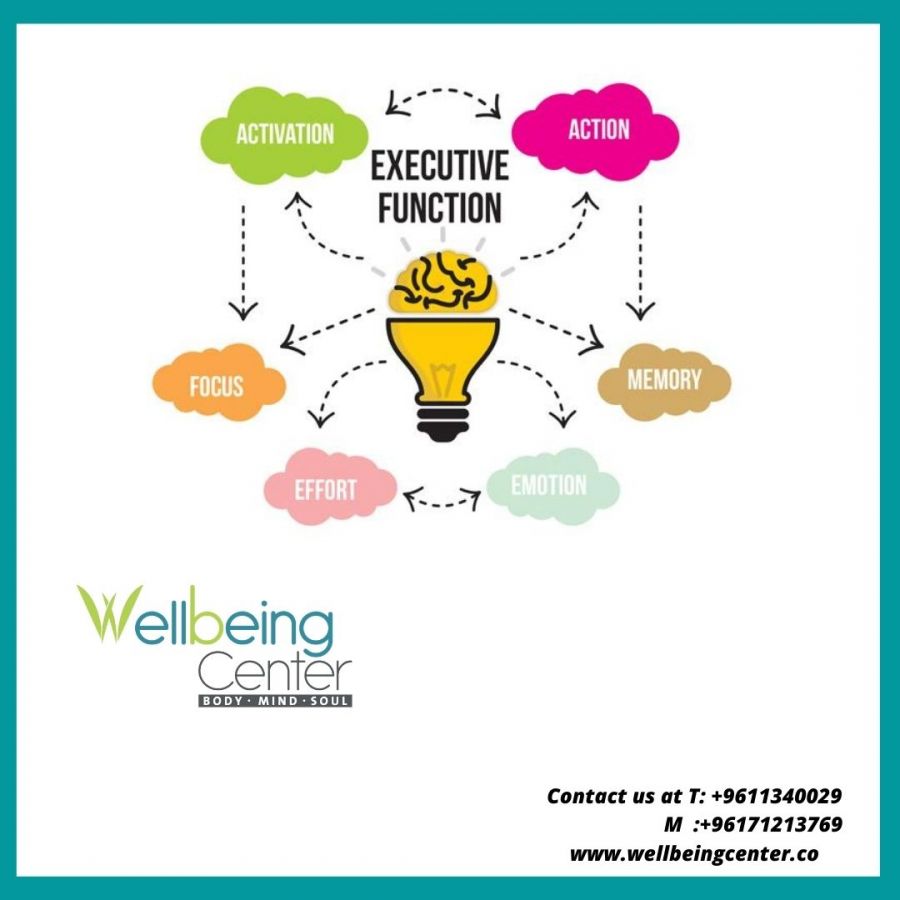What Is Executive Function?

When people struggle with executive function, it impacts them at home, in school, and in life.
There are three main areas of executive function. They are:
- 1. Working memory
2. Cognetive flexibility. (also called flexible thinking)
- Inhibitory control (which includes self-control)
Executive function is responsible for many skills, including:
- Paying attention
- Organizing, planning, and prioritizing
- Starting tasks and staying focused on them to completion
- Understanding different points of view
- Regulating emotions
- Self-monitoring (keeping track of what you’re doing)
Tips to Improve your Executive Functioning
1- Use checklists:
Keep track of what needs to be done with a list instead of holding it in your head. In your list, try to define the steps that are necessary in order to complete a task. This can make it less overwhelming to start tackling the item.
2- Pick 5 top things to get done each day
Get a blank piece of paper and write your 5 must-do tasks on the top half and bonus tasks on the bottom. Fold the paper in half so you only see the bonus tasks after you finish the top half.
3- Do what you are dreading first
Is there a particular task you are dreading? Do that first! Tackling a task that is causing you angst will free you up to focus on other tasks that you aren’t worried about. Don’t keep transferring that task to a new day. Dreaded tasks can be progress stoppers!
4. Don’t overdo the lists!
Some people overdo it and make long lists which then serve to overwhelm them instead of reducing stress. If a list is so cumbersome that it inspires repulsion it is not going to have the effect that we are going for.
5. Write down daily routines
Spend less time trying to recreate what has to be done each day. It can be helpful to make a list of the morning routine or bedtime rituals. Or steps to take when you are about to leave work for the day. Think about where you waste energy trying to remember things (or where you find yourself forgetting steps) and start with a list for that.
6. Use apps to automate your lists and routines
There are great apps that can help automate lists. Recurrent tasks can be scheduled out at whatever frequency is needed and reminders can be set. The more that is automated the less chance for skipping the list that day and energy can be focused elsewhere.
7. Set time limits for steps in a task:
When breaking down a task, assign time limits to the steps for better long-term planning. This will give a more accurate sense of how much time is needed to complete the project.
8. Do tasks immediately if they take less than 3 minutes.
Stop yourself when you are about to say “I’ll do it later”. Train yourself to do these tasks immediately. It isn’t worth the time it takes to write these on your to-do list. It is better to tackle them immediately before they are forgotten.
9.Use a calendar planner:
A planner can help you keep track of projects, organize time, and evaluate progress. To-do lists can be done in the planner so that you have access to everything in one place.
One key is to find a planner you love! Make sure it has all the components that would be helpful for you. Try one and if it isn’t the greatest move on to a different one.
10- Are you in the “Sticky Note Fan Club”?
Some people use sticky notes for everything. Using different colored notes for each project or class can be a way to quickly and easily visualize what needs to be done.
11. Establish a routine:
Come up with a routine and try to practice it daily. You can even make it silly and come up with a song or mnemonic that covers all the needed step.
